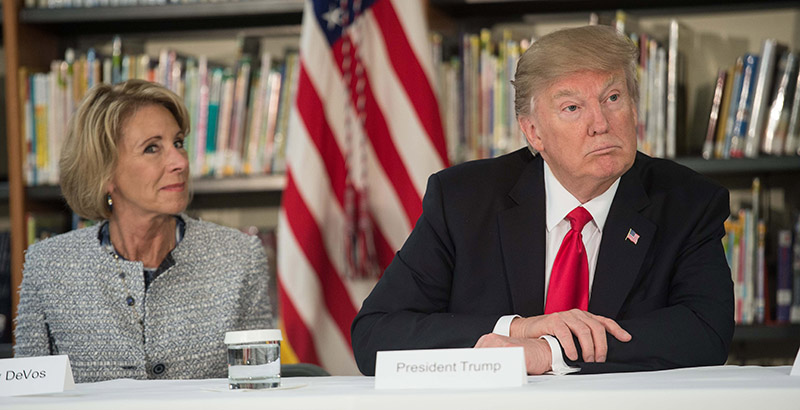Rotherham: 3 Things to Consider About Trump’s Risky, but Not Necessarily Bad, Idea to Merge the Education & Labor Departments

The historian Will Durant quipped that “one of the lessons of history is that nothing is often a good thing to do and always a clever thing to say.” That’s an idea obviously lost on the Trump administration, but it occurred to me last week when the administration announced its idea to merge the Departments of Education and Labor.
It faces long odds, but here are three things to keep in mind about the administration’s plan:
First, this is an idea that comes up from time to time and it’s not without precedent. Getting rid of the Department of Education has long been a Republican white whale. In 1995, for instance, then-Congressman Steve Gunderson proposed combining the Departments of Education and Labor. His proposal enjoyed support among Republicans in Congress but was strongly opposed by the Clinton administration. It failed. There are also episodic debates about moving big education programs, for instance Head Start, which currently is operated by the Department of Health and Human Services, from one agency to another. Jimmy Carter and George W. Bush both tried to move Head Start to the Department of Education. It’s overlooked now, but until 1979, the Department of Education itself was part of another agency.
Second, it’s risky but not axiomatically a bad idea. Given that it’s coming from the Trump administration, the idea was dismissed out of hand pretty fast. My colleague Charlie Barone thinks the administration is using it to distract from other actions they’re taking at the Education Department. I don’t think they are that strategic, and candidate-Trump did say he’d reorganize the federal government. This proposal seems more like box-checking and an easy talking point.
Yet before you write it off, here’s longtime education analyst Anthony Carnevale, hardly an apologist for the administration, arguing that there is a lot of merit to the idea. There is no reason to think an Education-Labor mashup couldn’t help improve coordination and synergy between federal education post-secondary and job training initiatives and higher education programs.
But there are also serious risks. For starters, education is about more than workforce development and job training. And it’s possible to run effective or ineffective programs in any agency — as ample experience shows. So, for this to work it would have to be more than old wine in new bottles. And many of the things these departments do are not high-profile but are nonetheless vital services, for example in the case of the Department of Education, special education and civil rights enforcement. Any consolidation that undercuts those and similarly critical efforts would be a step backwards.
Third, it’s unlikely to happen anyway in the current climate or in an effective manner with this administration. Proposals like this are always a long shot. The various things agencies do all have congressional patrons on both sides of the aisle. That creates politics that are hard to navigate. The reflexive and turbo-charged partisanship of 2018 will only muddy the water more.
Over the weekend, Whiteboard Advisors, a consulting firm that I work with as a senior advisor, surveyed policy insiders in D.C. about the idea and while there were mixed views about the merits of merging the two departments, the insiders overwhelmingly saw little chance of it happening.
Finally, this is something that has to be done carefully. It’s pretty easy to make a case about how presidents Clinton, Bush, or Obama could have pulled this off. They understood governance and also how agencies interact with various constituencies — state and local government, interest groups, and citizens.
President Trump, by contrast, seems to care little, if at all, about good governance or parsing serious policy questions. Reorganizing federal agencies is not about who is up or down on Fox News or quick hits on Twitter. Rather, it’s about how to deliver important services for the next quarter-century or more. It’s hard to see this chaotic and understaffed administration getting something like that right.
Get stories like these delivered straight to your inbox. Sign up for The 74 Newsletter

;)
